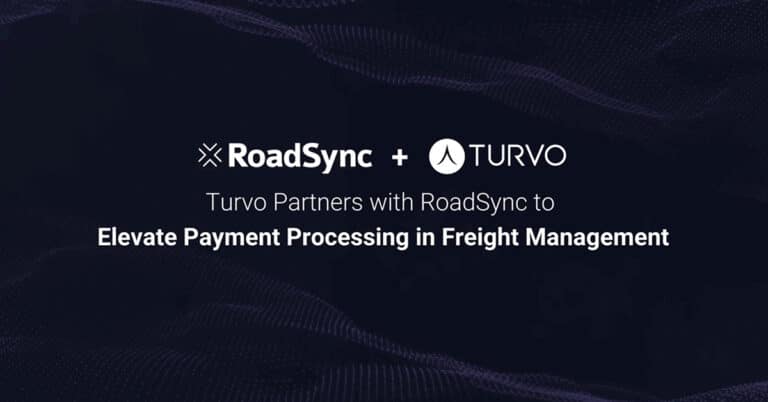Freight movement is the backbone of America, but freight brokers and 3PLs aren’t in the business to perform community service; income matters. Profit is your most important metric, and any way to increase it in this competitive business is a top consideration.
Fortunately, some simple tweaks and enhanced use of technology boost profits while creating a competitive advantage that will bring in more business.
How to Calculate Freight Broker Profit Margin
Most freight brokers earn their pay by making commissions related to their financial performance. Finding new ways to increase commissions requires knowing how the commission structure works and what factors into your pay.
Average freight broker commission/pay
Per Indeed, the average freight broker earns a base salary of $77,048 per year, and their commission adds another $33,000 per year on average. For new brokers, average base salaries are significantly lower, averaging $45,557, according to Ziprecruiter.
Those numbers are averages, and salaries can vary based on employment status, brokerage agreements, or region. As a broker, you could be a W-2 employee or an independent contractor, each with potentially different terms. Your pay could be a base plus commission or straight commission.
Gross margin vs. gross revenue
A commission is calculated on the gross margin of the booked load. Calculating the gross margin is as simple as subtracting the amount paid to the carrier from what the shipper is billed.
The gross margin equation is shipper’s charge – price paid to carrier = gross margin
Gross revenue is simply the amount of a sale or sales before any deductions, including the freight costs.
How are freight broker commissions calculated?
Calculating your commissions requires calculating the gross margin and then applying your commission percentage.
- Use the gross margin equation, shipper’s charge – the price paid to carrier = gross margin, to calculate the amount your commission is factored against.
- Apply your commission percentage by representing the percentage as decimals and multiplying by the gross margin. If your commission is 5% and the gross margin is $1,000, the equation would be 0.30 * $1,000 = $300.
Tactical Ways Freight Brokers can Increase Margins
The are three simple ways brokers tactically increase their margins.
Increase the commission percentage
While controlled mainly by the prevailing market rates and the brokerage, you’ll make more if your commission can be renegotiated to a more significant percentage.
Increasing the gross margin by raising the shipper’s rates
Every additional dollar earned from raising the shipper’s rates results in a higher commission. Raising the shipper’s rates might not be suitable if other brokers offer more competitive rates.
Reducing the cost of shipping
Negotiating lower costs with the carrier has the greatest chance of success in tactically increasing your commission. You don’t risk losing a shipper, and carriers want to keep your business.
Strategic Ways to Increase Freight Broker Margins
A strategic approach to increase margins sounds like a more sophisticated operation. Still, innovations in freight brokering make these solutions easy, much more likely to increase your commissions, and simplify your jobs.
Connect the End-to-End Supply Chain to Improve Visibility
Supply chain visibility lets you track goods while in transit, giving you a clear view of carrier activity. You become more informed about how your supply chain works while lowering risk and optimizing shipping timelines. Greater efficiency and visibility reduce your costs and turn loads faster, allowing you to move more products. Additionally, the improved customer service you offer your shippers will keep them returning.
Streamline Freight Invoicing And Settlement With A Digital Collaborative Logistics Platform
When non-commissioned activities take less of your time, that’s more bandwidth to take on profitable activities. Automated processes also eliminate unnecessary errors and discrepancies that cost you money, and it’s a big win.
Take Advantage of Digital Load Matching Platforms
Imagine how much easier and more efficient your job becomes when shipments and carriers are matched automatically. Finding a carrier that needs to fill fleet vehicles and matching their capacity with a shipment maximizes gross profit.
Reducing your need to make phone calls or send emails while an AI finds qualified freight partners accelerate your ability to move products while cutting freight costs.
Five other tips to maximize revenue and profit margins
These financial and logistics strategies can optimize Freight finance and margins to increase margins quickly.
Diversify your lane and modal mix
Branch out from your standard shipper-client profile to diversify your lanes and modal mix to reduce direct costs. The knowledge of when to consolidate, switch freight modes, and how to eliminate backhauls creates freight diversity that increases profits.
Accept tendered load with rates based on current market dynamics
Consider the market dynamics; when a shipper tenders a load to you, if it’s easy to pick up and transport, it’s easy to accept. In a carrier market, understanding the unique dynamics in play help with an understanding of 3PL and broker margins.
Target lanes with high-profitable needs
A simple method to increase profitability is to target lanes with high-profitable needs. Bear in mind that not every move comes with the same profit potential. Consider the entire picture to include the ease of loading and unloading, the potential risk of dwell time, the possibility for increased emissions, and other additional factors.
Eliminate empty backhauls
Eliminating empty backhauls is easy as a shipper somewhere wants the capacity, and carriers don’t want to travel empty. Matching the two results in higher profits.
Know when to say “no.”
It’s one of the hardest things for 3PLs and Brokers, but saying “no” is sometimes necessary. Empty miles usually amount to lost revenue for drivers. That reality forces 3PLs and brokerages to weigh the effort and time for a less-profitable load when other options are available.
Use Technology to Your Advantage
Using technology gives you a competitive advantage and increases your commissions. Technology will help you to:
- Get market insights into pricing for spot and contract freight: Freight markets are constantly in flux, and those with the most reliable and current insights into the market succeed. Freight market intelligence needs to be as close to real-time as possible. Using the best data, brokers win more business and expand their margins.
- Save time and reduce errors through automation: The fewer low-value, repetitive tasks you have to handle, the less likely you are to make costly mistakes. Time is gained that can be better used winning business and optimizing loads.
- Better manage your business: Gaining insights about your business you wouldn’t otherwise see helps you change directions and analyze the health of your business. Analytics that measure performance and their unique perspective will move you to more profitable activities and better management.
Increasing margins comes with the benefits of automating away redundant tasks and improving your customers’ experiences when you incorporate Turvo into your business. A demo of how Turvo increases your profit margins is a click away.









